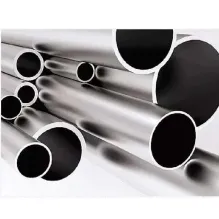-
Cangzhou Yulong Steel Co., Ltd.
-
Phone:
+86 13303177267 -
Email:
admin@ylsteelfittings.com
- English
- Arabic
- Italian
- Spanish
- Portuguese
- German
- kazakh
- Persian
- Greek
- French
- Russian
- Polish
- Thai
- Indonesian
- Vietnamese
- Zulu
- Korean
- Uzbek
- Hindi
- Serbian
- Malay
- Ukrainian
- Gujarati
- Haitian Creole
- hausa
- hawaiian
- Hebrew
- Miao
- Hungarian
- Icelandic
- igbo
- irish
- Japanese
- Javanese
- Kannada
- Khmer
- Rwandese
- Afrikaans
- Albanian
- Amharic
- Armenian
- Azerbaijani
- Basque
- Belarusian
- Bengali
- Bosnian
- Bulgarian
- Catalan
- Cebuano
- China
- China (Taiwan)
- Corsican
- Croatian
- Czech
- Danish
- Esperanto
- Estonian
- Finnish
- Frisian
- Galician
- Georgian
- Kurdish
- Kyrgyz
- Lao
- Latin
- Latvian
- Lithuanian
- Luxembourgish
- Macedonian
- Malgashi
- Malayalam
- Maltese
- Maori
- Marathi
- Mongolian
- Myanmar
- Nepali
- Norwegian
- Norwegian
- Occitan
- Pashto
- Dutch
- Punjabi
- Romanian
- Samoan
- Scottish Gaelic
- Sesotho
- Shona
- Sindhi
- Sinhala
- Slovak
- Slovenian
- Somali
- Sundanese
- Swahili
- Swedish
- Tagalog
- Tajik
- Tamil
- Tatar
- Telugu
- Turkish
- Turkmen
- Urdu
- Uighur
- Welsh
- Bantu
- Yiddish
- Yoruba

Dec . 05, 2024 04:19 Back to list
Domestic Welded Fittings for Reliable Plumbing Solutions and Efficient Connections
Understanding Domestic Weld Fittings A Comprehensive Overview
In the realm of plumbing and piping systems, the importance of reliable and durable components cannot be overstated. Among these components, domestic weld fittings play a pivotal role in ensuring that pipelines operate efficiently and securely. This article explores the various aspects of domestic weld fittings, including their types, applications, advantages, and installation practices.
What are Domestic Weld Fittings?
Domestic weld fittings are specialized components used to connect two or more piping sections through the process of welding. They are crafted from various materials, including carbon steel, stainless steel, and other alloys, making them suitable for a range of domestic applications. The main function of weld fittings is to facilitate a strong and leak-proof connection, which is essential for the safe transport of fluids and gases.
Types of Weld Fittings
Weld fittings come in various shapes and sizes, designed to accommodate different needs in plumbing systems. The most common types include
1. Elbows These fittings are used to change the direction of the pipe, typically available in 90-degree and 45-degree angles. 2. Tees A tee fitting allows for a branch connection in a pipeline, creating a T-shaped junction.
3. Reducers Designed to connect pipes of different diameters, reducers allow for a smooth transition from a larger pipe to a smaller one.
4. Caps These fittings are used to seal the end of a pipe, preventing flow and providing a secure closure.
5. Flanges Flanges facilitate the connection between pipes and other equipment, allowing for easy disassembly, maintenance, and inspection.
Applications of Domestic Weld Fittings
Domestic weld fittings are widely used across various industries and applications, including residential plumbing, HVAC systems, fire protection systems, and even chemical processing facilities. In residential applications, weld fittings are often found in water supply lines, heating systems, and gas distribution networks. Their robust construction ensures that they can withstand high pressure and temperature variations, making them ideal for demanding environments.
Advantages of Using Weld Fittings
domestic weld fittings

There are several advantages to using domestic weld fittings in plumbing systems
1. Strength and Durability Welded connections create a continuous piece of piping that is inherently stronger than threaded or glued connections, thereby enhancing the overall integrity of the system.
3. Versatility Weld fittings can be used with a variety of piping materials and can accommodate different sizes and configurations.
4. Cost-Effective Although the initial installation of welded systems may be higher due to the welding process, the long-term benefits of fewer repairs and replacements can offset these initial costs.
Installation Practices
Proper installation of domestic weld fittings is crucial to ensure the longevity and reliability of the piping system. Here are some key practices to follow
1. Surface Preparation Before welding, ensure that the surfaces of the pipes and fittings are cleaned and free of contaminants like rust, oil, or dirt.
2. Fit-Up and Alignment Ensure that the fittings and pipes are properly aligned, as misalignment can lead to stress on the weld and potential failure.
3. Welding Techniques Utilize appropriate welding techniques based on the materials and application. Common methods include MIG, TIG, and stick welding.
4. Inspection After installation, inspect all welds for quality and integrity. This may involve non-destructive testing methods to identify potential issues before they become critical.
Conclusion
Domestic weld fittings are essential components in creating robust and reliable plumbing and piping systems. Their strength, durability, and leak resistance make them ideal for a wide range of applications. By understanding the types, applications, advantages, and best installation practices associated with weld fittings, homeowners and professionals can ensure that their plumbing systems remain safe and effective for years to come. Investing in high-quality fittings and adhering to proper installation techniques can significantly impact overall system performance and longevity.
Latest news
-
ANSI 150P SS304 SO FLANGE
NewsFeb.14,2025
-
ASTM A333GR6 STEEL PIPE
NewsJan.20,2025
-
ANSI B16.5 WELDING NECK FLANGE
NewsJan.15,2026
-
ANSI B16.5 SLIP-ON FLANGE
NewsApr.19,2024
-
SABS 1123 FLANGE
NewsJan.15,2025
-
DIN86044 PLATE FLANGE
NewsApr.19,2024
-
DIN2527 BLIND FLANGE
NewsApr.12,2024
-
JIS B2311 Butt-Welding Fittings LR/SR 45°/90° /180°Seamless/Weld
NewsApr.23,2024











